Tech
First-Generation iPhone Sells For Over 100 Times Its Original Price In Auction
Published
2 years agoon

A first-generation iPhone that was still unused and in its original factory-sealed packaging was sold at an auction for an astounding $63,356.40. Initially, the 8 GB phone was expected to bring in a minimum of $50,000 but made much more money. Given that the phone initially cost $599 in 2007, this is a remarkable accomplishment. The phone grabbed the attention of many relic collectors when it started receiving 100x price on the original cost of the phone in 2007.
The first ever smartphone from the house of Apple proved to be a cutting-edge gadget. It consisted of a touchscreen, web browser, and 2-megapixel camera. The phone was available to buy in two variants; $499 model with 4 GB of storage or the $599 model with 8 GB of storage. In 2007, the iPhone quickly became the top selling Apple product. Also, the Time Magazine featured this first generation gadget as the invention of the year.
Also Read:Baidu’s AI Language Model Ernie Bot Set To Shake Up The Industry
When Karen Green, the seller of this decade old iPhone, began a new job in 2007, her friends gave her the phone as a present. She didn’t want to transfer cellular providers in order to activate the iPhone, though, as she already had a new phone. So, the phone remained in sealed condition for more than 12 years until she had it appraised on the daytime TV programme “The Doctor & The Diva” in 2019. The resident appraiser for the programme at the time gave it a $5,000 value.
But, Green noticed in October that a brand-new, unopened iPhone went for $39,339 in a previous LCG auction. Green made the decision to sell the phone after saving it for all those years in order to fund her New Jersey cosmetic tattoo parlour, which is her current line of work. “I am selling this iPhone because I need to sustain this business,” she said.
It’s incredible that the phone received a whopping price. It proves that the iPhones are still a high priced possession for many users even after all these years. Over the years, Apple has improved far in terms of its technology and product line. However, it is still intriguing to imagine what Apple has in its fold for us in the future.
Sahil Sachdeva is an International award-winning serial entrepreneur and founder of Level Up PR. With an unmatched reputation in the PR industry, Sahil builds elite personal brands by securing placements in top-tier press, podcasts, and TV to increase brand exposure, revenue growth, and talent retention. His charismatic and results-driven approach has made him a go-to expert for businesses looking to take their branding to the next level.

You may like
-


The Future of Entrepreneurship: Insights from Royan Nidea’s Vision
-


Apple Vision Pro Unveiled: A Revolutionary Spatial Computer Redefining Personal Computing
-


Google Developer Conference to Unveil Latest AI Updates, Including PaLM 2 Language Model
-
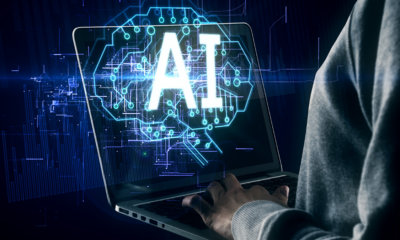

AI Trailblazer Geoffrey Hinton Retires and Warns of AI Chatbot Dangers

The world of technology is often a battlefield of innovation, but sometimes, the fight extends beyond patents and market share into the shadows of espionage. A former executive at a top tech firm now finds himself at the center of a high-stakes legal drama, accused of stealing confidential trade secrets. His defense? He was recruited by a powerful industry rival who promised him a life straight out of a spy thriller—complete with high-risk missions, covert strategies, and the allure of becoming the next James Bond of the corporate world.
From Boardrooms to Allegations of Espionage
At the heart of this controversy is a well-respected figure in the tech industry who once held a prominent position within a major company. His experience and insider knowledge made him a valuable asset in a world where information is more valuable than gold. However, prosecutors allege that instead of merely switching jobs, he engaged in a calculated operation to smuggle trade secrets from his former employer.
According to legal filings, the accused was allegedly persuaded by a high-profile CEO from a competing firm. The rival leader reportedly offered not just a lucrative position but an opportunity to play a pivotal role in a larger, secretive agenda—one that would give him the kind of power, influence, and excitement that only spies and intelligence operatives usually experience.
The accused, however, maintains his innocence. He claims that he was misled and manipulated, drawn into an operation where the lines between corporate ambition and corporate espionage were deliberately blurred. His defense argues that the promises made to him painted a picture of high-stakes intelligence work rather than simple trade secret theft.
The Shadowy World of Tech Espionage
This case is not the first time the tech industry has been rocked by allegations of espionage. With billions of dollars on the line, companies often find themselves engaged in fierce battles over intellectual property, talent, and market dominance. But while lawsuits over patents and innovations are common, outright accusations of espionage are rarer—and more dramatic.
The rise of global competition in technology has intensified these battles. Major corporations and emerging startups alike invest heavily in research and development, creating innovations that could define the future of their industries. However, when progress is measured in the speed of breakthroughs, some executives and firms may be tempted to take shortcuts—sometimes at the expense of ethics and legality.
For companies that rely on proprietary data and confidential strategies, an insider with access to critical information is both an asset and a liability. A single employee with the right knowledge can alter the course of a company’s future, for better or worse. This case, in particular, highlights the extreme lengths to which some are willing to go to secure an edge over their competitors.

The “James Bond” Recruitment Pitch: Fact or Fiction?
The most sensational aspect of this case is the claim that the accused was lured with promises of a life akin to an intelligence operative. According to his defense, the CEO who recruited him played into his fascination with spy tactics, secret missions, and high-stakes decision-making. Whether this was a psychological manipulation tactic or an exaggeration of a typical corporate recruitment strategy remains unclear.
In court documents, the accused describes a series of meetings in which he was given carefully crafted narratives about his potential role. These discussions reportedly painted him as an elite strategist, someone who would help dismantle industry giants and reshape the market landscape. The recruitment process, he claims, felt less like a job offer and more like being inducted into an elite secret society.
While these claims might sound like something from a movie, legal experts argue that such tactics aren’t entirely unheard of. High-level executives are often recruited with promises that go beyond salary and bonuses—some are enticed with visions of legacy-building, power, and influence that extend far beyond the confines of their immediate roles.
A Battle of Narratives
The legal battle surrounding this case is as much about facts as it is about perception. Prosecutors are painting the accused as a calculated operator who knowingly stole trade secrets and funneled them to a competitor for personal and financial gain. They argue that his “James Bond defense” is nothing more than an attempt to divert attention from the serious charges he faces.
The defense, on the other hand, is working hard to frame the accused as a pawn in a larger game—someone who was lured in, manipulated, and ultimately abandoned when the operation became too risky. They argue that while he may have taken actions that appear suspicious, he did so under the belief that he was participating in a corporate strategy rather than an outright illegal act.
As this case unfolds, the stakes continue to rise. If the accused is found guilty, he could face severe penalties, including hefty fines and possible prison time. But beyond the legal consequences, this case is also sending shockwaves through the industry, forcing companies to reevaluate their internal security measures and recruitment practices.
What This Means for the Future of Tech Security
Regardless of the trial’s outcome, this case highlights a growing concern within the tech world: the increasing vulnerability of proprietary information in an age of aggressive corporate warfare. As competition continues to intensify, businesses must invest in better security protocols, employee training, and legal safeguards to prevent similar incidents.
For employees and executives, this case serves as a stark warning about the blurred lines between opportunity and risk. When a job offer comes with promises that sound too good to be true—whether it’s unlimited power, high-stakes missions, or a lifestyle akin to a Hollywood spy—it may be worth questioning the true nature of the deal.
In the end, whether this accused tech executive was truly a corporate spy or merely a victim of an elaborate recruitment scheme, one thing is certain: the battle for innovation is no longer just about who builds the best technology—it’s also about who protects their secrets the best.

Studio Ghibli. The name itself evokes a sense of wonder, nostalgia, and a profound connection to the art of animation. More than just a studio, Ghibli represents a philosophy, a commitment to craftsmanship, and an unwavering belief in the power of storytelling. Their films are not mere entertainment; they are immersive experiences that resonate with audiences of all ages, across cultural boundaries. What is it about Ghibli’s art that captivates us so deeply? What are the elements that make their visual style so distinctive and enduring? And what is the future of this unique artistic legacy in an increasingly digital world? Let’s delve into the enchanting world of Ghibli and explore these questions.
A Celebration of Artistic Excellence
Ghibli’s art is renowned for its meticulous attention to detail, its lush and vibrant colors, and its ability to evoke a powerful sense of atmosphere. Several key elements contribute to its unique appeal:
- Hand-Drawn Mastery: At the heart of Ghibli’s aesthetic is a dedication to traditional hand-drawn animation. While computer animation is used in some aspects of production, the core of their films relies on the skill and artistry of animators who painstakingly bring each frame to life. This commitment to hand-drawn techniques lends a warmth, fluidity, and organic quality to their visuals that is often lacking in computer-generated imagery. The imperfections inherent in hand-drawn art contribute to its charm and authenticity, creating a more intimate connection with the viewer.
- Detailed Backgrounds: Ghibli’s backgrounds are often breathtaking in their scope and detail. From the rolling hills of the countryside to the bustling streets of a city, each environment is rendered with a loving care that immerses the viewer in the world of the film. The attention to detail extends to the smallest elements, such as the way light filters through leaves or the texture of a stone wall. These richly detailed backgrounds not only provide a visually stunning backdrop for the characters but also contribute to the overall mood and atmosphere of the story.
- Expressive Characters: Ghibli’s characters are brought to life with a remarkable range of emotions and expressions. Their faces are nuanced and expressive, conveying everything from joy and sorrow to anger and confusion with subtle gestures and movements. This emotional depth allows viewers to connect with the characters on a personal level and to become invested in their stories. The character designs themselves are often iconic, instantly recognizable and beloved by fans around the world.
- Dynamic Animation: Ghibli’s animation is fluid, dynamic, and full of life. From the soaring flight of a dragon to the gentle sway of a field of grass, every movement is rendered with a sense of realism and grace. The studio is known for its innovative use of animation techniques, often pushing the boundaries of what is possible with hand-drawn art. This dynamic animation brings an energy and vitality to their films that keeps viewers engaged and enthralled.
- Evocative Color Palettes: Ghibli’s films are characterized by their use of rich and evocative color palettes. Colors are carefully chosen to reflect the mood and atmosphere of each scene, whether it be the warm hues of a sunset or the cool tones of a moonlit night. The studio’s mastery of color creates a visually stunning experience that is both beautiful and emotionally resonant.

Addressing Potential Criticisms
While Ghibli’s art is widely celebrated, it is important to acknowledge some potential criticisms or limitations:
- Pacing: Some viewers may find the pacing of Ghibli films to be slower or more deliberate than that of mainstream animated movies. The studio often prioritizes character development and atmosphere over fast-paced action sequences. While this can be a strength for many, it may not appeal to all audiences.
- Subtlety: Ghibli’s storytelling is often subtle and nuanced, relying on visual cues and emotional depth rather than explicit exposition. This can require viewers to pay close attention and to engage with the film on a deeper level. Some may find this lack of overt explanation to be confusing or frustrating.
- Traditionalism: While Ghibli’s commitment to hand-drawn animation is a major strength, it can also be seen as a limitation in an increasingly digital age. The production process can be time-consuming and expensive, which may restrict the number of films the studio is able to produce.
- Accessibility: While Ghibli films have gained global popularity, their unique artistic style and cultural references may not resonate with all audiences. Some viewers may find the films to be too Japanese or too esoteric for their tastes.
Preserving the Legacy and Embracing Innovation
The future of Ghibli’s art is a topic of much discussion and speculation. As technology continues to evolve and the animation industry undergoes rapid changes, several factors will shape the studio’s path forward:
- Preserving Hand-Drawn Techniques: One of the biggest challenges for Ghibli is to preserve its legacy of hand-drawn animation in a world that is increasingly dominated by computer-generated imagery. The studio must find ways to train and mentor new generations of animators who are skilled in traditional techniques. This may involve exploring new ways to integrate digital tools into the hand-drawn process, while still retaining the warmth and authenticity of traditional art.
- Embracing Digital Innovation: While Ghibli is known for its commitment to hand-drawn animation, the studio has also embraced digital technology in various aspects of its production process. In the future, it is likely that Ghibli will continue to explore new ways to use digital tools to enhance its art, such as using AI to assist with background creation or to streamline certain animation tasks. However, it is crucial that these digital innovations serve to enhance, rather than replace, the studio’s core artistic values.
- Expanding Global Reach: Ghibli’s films have already achieved significant global success, but there is still potential to expand its reach to new audiences. This may involve exploring new distribution strategies, such as streaming platforms, or creating content that is specifically designed to appeal to international viewers. However, it is important that Ghibli maintains its artistic integrity and does not compromise its unique vision in pursuit of commercial success.
- Diversifying Storytelling: While Ghibli is known for its fantasy and adventure films, the studio has also explored a range of other genres, including drama, comedy, and science fiction. In the future, it is possible that Ghibli will continue to diversify its storytelling, creating films that tackle a wider range of themes and subjects. This could involve collaborating with new writers and directors or adapting existing works of literature.
- Nurturing New Talent: The future of Ghibli depends on its ability to nurture and develop new talent. This involves providing opportunities for young animators, directors, and writers to learn from the studio’s experienced professionals. Ghibli must create a supportive and creative environment that encourages innovation and experimentation.
Level Up Magazine’s Perspective
At Level Up Magazine, we believe that Ghibli’s art represents the pinnacle of animated storytelling. Its dedication to craftsmanship, its emotional depth, and its ability to transport viewers to other worlds make it a true treasure. As a trendsetting community, we recognize Ghibli’s enduring influence on popular culture and its continued relevance in the ever-evolving landscape of entertainment. We celebrate its commitment to artistic excellence and its ability to inspire creativity and imagination.
Ghibli’s art is a testament to the power of animation to move, inspire, and entertain. Its unique blend of artistic mastery, emotional depth, and imaginative storytelling has captivated audiences around the world. While the studio faces challenges in a rapidly changing industry, its commitment to its core values ensures that its legacy will endure for generations to come. As Level Up Magazine continues to explore and celebrate the latest trends in art and culture, we will undoubtedly continue to be inspired by the magic of Ghibli.

The digital age, while revolutionary, is hitting a wall called Quantum computing. Certain problems, like simulating complex molecules or optimizing vast logistical networks, remain stubbornly beyond the grasp of even the most powerful supercomputers. A new frontier beckons, one that promises to shatter these limitations and redefine what’s possible: quantum computing. This isn’t just an incremental upgrade; it’s a fundamental shift in how we process information, a leap from the classical world of bits to the enigmatic realm of qubits.
Current Applications: Glimmers of Potential in a Nascent Field
While still in its nascent stages, quantum computing is already showing promising signs, offering a tantalizing glimpse into its future potential. Here’s a deeper look into its present applications:
- Materials Science:
- Researchers are leveraging quantum algorithms to simulate the intricate behavior of molecules and atoms, potentially leading to the discovery of novel materials with tailored properties. This could revolutionize industries ranging from pharmaceuticals, where new drug compounds could be designed with unprecedented precision, to energy, where advanced materials for batteries and solar cells could be developed.
- Cryptography:
- Quantum computers, with their ability to perform complex calculations at extraordinary speeds, pose a potential threat to existing encryption methods that rely on the difficulty of factoring large numbers. However, they also offer the promise of quantum-resistant cryptography, ensuring secure communication in a post-quantum world. This dual nature makes quantum computing a critical area of focus for cybersecurity.
- Optimization:
- Quantum algorithms are being explored to tackle complex optimization problems that are intractable for classical computers. This includes optimizing supply chains for maximum efficiency, managing financial portfolios for optimal returns, and even optimizing traffic flow in urban environments to reduce congestion.
- Drug Discovery:
- Simulating molecular interactions to find new drugs and enhance existing drugs, is another area where early quantum computers are being tested. Quantum simulations could drastically reduce the time and cost of drug development, allowing for the creation of personalized medicine tailored to individual patients.
The Future: A Quantum Revolution Across Industries
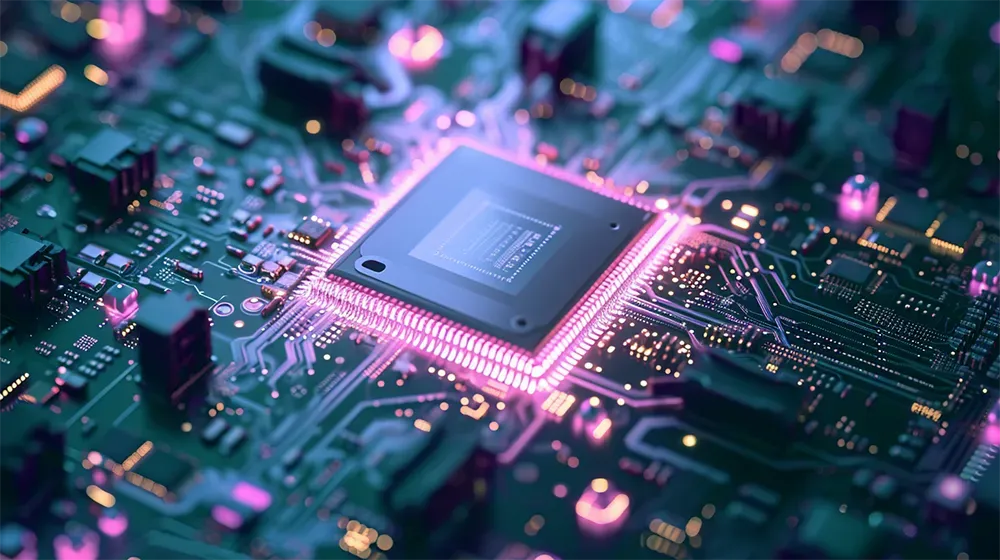
The long-term potential of quantum computing is staggering, promising to reshape industries and redefine the limits of computation. Here’s a glimpse into the possible future:
- Artificial Intelligence:
- Quantum computers could accelerate the development of AI, enabling the creation of more sophisticated and powerful algorithms. Imagine AI that can learn and adapt at an unprecedented pace, capable of solving problems that are currently beyond our reach. This could lead to breakthroughs in fields like machine learning, natural language processing, and robotics.
- Financial Modeling:
- Quantum computers could revolutionize financial modeling, enabling more accurate risk assessment and portfolio optimization. This could lead to more stable and efficient financial markets, reducing the likelihood of financial crises.
- Climate Modeling:
- Simulating complex climate systems with quantum computers could provide more accurate predictions of climate change, enabling better informed policy decisions. This could help us mitigate the effects of climate change and develop sustainable solutions.
- Advanced simulations:
- Simulating complex physics and creating new materials. Quantum simulations open the door to design new materials with very specific desired properties. This could revolutionize areas like aerospace, and material science.
Challenges and Opportunities: Navigating the Quantum Frontier
Despite the immense potential, significant challenges remain. Building and maintaining stable quantum computers is incredibly complex, requiring precise control over delicate quantum states. The field is still grappling with issues like error correction, which is essential for reliable computation, and scalability, which is necessary for building large-scale quantum computers.
However, the rapid pace of innovation suggests that these challenges will be overcome. As quantum computing technology matures, it has the potential to transform virtually every aspect of our lives, from healthcare and finance to transportation and energy. The race is on to unlock the full potential of this transformative technology.
Level Up Your Understanding: Embrace the Quantum Era
Quantum computing isn’t just a technological curiosity; it’s a paradigm shift that will reshape industries and redefine the limits of computation. For those looking to stay ahead of the curve, understanding the fundamentals and potential of this transformative technology is essential. Level up your knowledge, and prepare for the quantum revolution that is poised to redefine the future.
Tech
The Rise of Robotic Window Cleaners and the Future of Automation
Published
3 days agoon
March 31, 2025
Michael Brown never imagined that his career would shift from office supplies and distribution to robotics and automation. But one day, as he drove through Manhattan, he noticed something that hadn’t changed in decades—workers dangling from ropes, cleaning the towering glass facades of skyscrapers. The sight sparked an idea: why not replace this risky, outdated method with something safer, smarter, and faster?
Now, he’s leading a company that is not just revolutionizing window cleaning but redefining how urban buildings are maintained.
Beyond Just Cleaning: A Smarter Future for Skyscrapers
Traditional window cleaning for high-rise buildings is slow, dangerous, and dependent on human labor. The latest advancement in this space involves robotic arm systems, similar to those used in manufacturing but reengineered for high-rise exteriors. Mounted on traditional building maintenance units (BMUs), these robotic systems autonomously map surfaces using LiDAR technology, calculating the most efficient cleaning path hundreds of times per second.
It’s not just about speed—although these robotic cleaners can work three times faster than a human. The real breakthrough lies in their ability to collect and analyze data. While scrubbing glass, these robots simultaneously scan buildings for structural health issues, detecting cracks, sealant degradation, moisture infiltration, and even minor material shifts. This transforms routine cleaning into real-time building inspections, preventing costly repairs and improving energy efficiency.
The Power of Data in Building Maintenance
High-rise buildings are rarely inspected as frequently as they should be. In many cases, structural assessments occur only once every decade, leaving ample time for unnoticed damage to escalate. But with these robotic systems, real-time monitoring provides continuous updates on building health.
This shift from scheduled inspections to data-driven maintenance presents significant advantages. Building owners can fix problems as they arise rather than waiting for scheduled maintenance. Property developers gain better oversight of billion-dollar investments, manufacturers get real-world insights into how their materials age, and city officials can enforce safety standards more effectively.
This advancement also aligns with growing sustainability efforts. With the right data, buildings can optimize HVAC usage, reduce energy waste, and extend the lifespan of materials—all of which contribute to greener, more efficient cities.
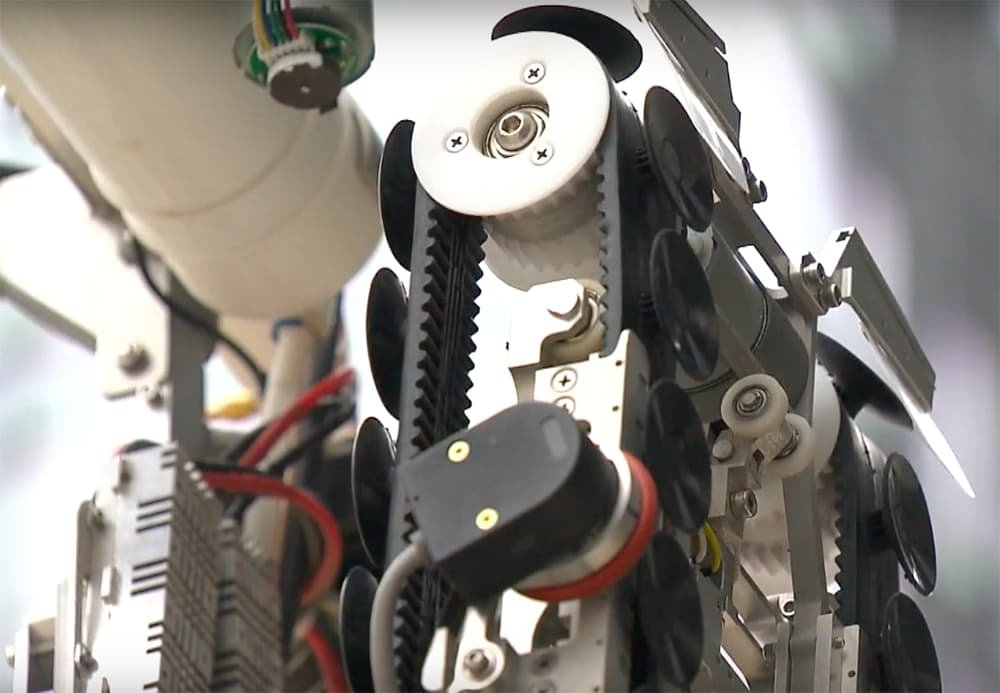
Aging Workforce Meets Smart Automation
While some fear that robotics will replace human jobs, this technology is actually addressing an existing labor shortage. Window washing is an aging profession. In many major cities, the number of trained workers has dropped significantly over the past decade. Meanwhile, skyscrapers are only getting taller and more numerous.
These robotic systems function as labor augmentation rather than replacement. They work alongside existing commercial cleaning firms, taking on the most dangerous tasks while allowing human workers to focus on safer, more specialized roles. By integrating within the current labor framework and working closely with regulators, these robotic cleaners have already gained approval in some of the strictest markets for working at height.
This cooperative approach ensures a smoother transition into automation while maintaining job opportunities for skilled workers in the field.
Scaling Up: A Global Vision
While this innovation started in one city, its applications are global. There are approximately 68,000 skyscrapers worldwide that require specialized maintenance, creating a massive market for this kind of automation.
Strategic partnerships with major BMU manufacturers have provided a direct pathway for expansion. Hundreds of new skyscrapers are built each year, and many are now integrating robotic cleaning systems directly into their infrastructure before the first window even needs to be washed.
This model not only accelerates adoption but also ensures that future high-rises are designed with automation in mind, reducing maintenance costs and increasing efficiency from day one.
Beyond Windows: The Next Frontier
The implications of this technology stretch beyond skyscraper maintenance. Other industries facing similar challenges—such as maritime shipping, where cleaning ship hulls in dry dock can cost millions per day, or aerospace, where reusable rockets require meticulous maintenance—could also benefit from robotic cleaning and inspection systems.
As the technology evolves, the next steps involve making these robots lighter, smarter, and more versatile. The goal is to develop systems that can handle a wider range of surfaces, environments, and maintenance tasks.
For now, the focus remains on perfecting the technology, but the long-term vision is clear: a world where automation plays a key role in maintaining infrastructure, reducing risks, and optimizing efficiency across multiple industries.
The Future of Smart Cities
This innovation represents more than just an improvement in window cleaning—it’s a glimpse into the future of smart cities. As more industries embrace automation, urban environments will become more data-driven, efficient, and sustainable.
With advancements in AI, robotics, and real-time analytics, the buildings of the future won’t just be taller—they’ll be safer, smarter, and more self-sustaining. And if these developments continue at their current pace, soon enough, the sight of workers dangling from ropes to clean skyscraper windows may be nothing more than a memory from the past.

In an age where our lives are increasingly intertwined with digital communication, the specter of sophisticated scams looms larger than ever. Imagine a world where your smartphone, far from being a passive recipient of these fraudulent attempts, transforms into an active guardian, a vigilant sentinel against the relentless tide of digital deception. This isn’t a futuristic fantasy; it’s the tangible reality being forged by cutting-edge technological advancements. The stark reality, as evidenced by the staggering trillion-dollar losses reported globally, underscores the urgent need for robust defenses against these ever-evolving threats.
Recent innovations have seen the integration of AI-powered scam detection directly into the fabric of our mobile devices, promising a paradigm shift in digital security. Gone are the days of relying solely on rudimentary spam filters; instead, we’re witnessing the rise of intelligent systems capable of analyzing conversations in real-time, discerning subtle patterns and linguistic nuances that betray the insidious intent of fraudsters. This is not merely about blocking obvious spam; it’s about understanding the intricate dance of human interaction and preemptively identifying the manipulative tactics employed by today’s tech-savvy scammers.
The Evolving Landscape of Digital Deception
The limitations of traditional spam filters in the face of modern scam tactics are becoming increasingly apparent. These fraudsters are masters of adaptation, constantly refining their methods to circumvent existing security protocols. They exploit the power of AI to craft highly personalized scams, tailoring messages to exploit individual vulnerabilities and leveraging deepfake technology to mimic trusted individuals with alarming accuracy. This level of sophistication necessitates a proactive and intelligent approach to digital security.
The sheer volume of scam attempts flooding our digital channels further accentuates the urgency for advanced protective measures. Reports paint a grim picture, revealing that a staggering proportion of individuals are subjected to a daily barrage of scam calls and messages, creating a pervasive sense of digital vulnerability. This relentless onslaught not only disrupts daily life but also imposes a substantial financial and emotional burden on individuals and families.

AI: The Vanguard Against Digital Fraud
The latest advancements in AI-powered scam detection represent a fundamental shift in the landscape of digital security. These systems operate by analyzing incoming text messages and phone calls in real-time, scrutinizing the content and identifying patterns commonly associated with fraudulent activity. This includes the detection of phishing attempts, fraudulent offers, and attempts to elicit sensitive personal information.
- Real-Time Conversational Analysis: AI models meticulously analyze conversations as they unfold, flagging suspicious messages and calls before they can inflict harm.
- Sophisticated Pattern Recognition: These systems are adept at identifying linguistic cues and behavioral patterns that are indicative of fraudulent intent, even when disguised under layers of social engineering.
- Proactive User Warnings: Users are promptly alerted when a potential scam is detected, empowering them to make informed decisions and avoid falling victim to deception.
- Enhanced Call Screening: AI-powered call screening transcends basic caller ID, delving into the content of conversations to identify potential scams with unprecedented accuracy.
- On-Device AI Processing: Advanced AI models, optimized for on-device processing, enable real-time analysis without compromising user privacy or relying on constant cloud connectivity.
The Tangible Impact on User Safety
The efficacy of these AI-powered scam detection features is already being demonstrated in real-world scenarios. Early user surveys reveal that these alerts have significantly enhanced user awareness, enabling them to detect suspicious activity and avoid falling prey to scams. This proactive approach to digital security is empowering users to reclaim control over their online safety.
Looking Towards a Secure Digital Future
As AI technology continues its rapid evolution, so too will the sophistication of scam tactics. However, the advancements in AI-powered security are also keeping pace, promising a future where digital interactions are characterized by enhanced safety and security.
The ongoing development and expansion of these AI-powered scam detection features represent a pivotal step in safeguarding users from the ever-evolving threat landscape. By equipping users with timely warnings and actionable insights, these technologies are playing a critical role in fostering a more secure and trustworthy digital environment for all.
Expanding the Scope of Protection:
It’s important to note that this is an ongoing battle. The AI that protects us, will be challenged by AI made to scam us. This means that the companies developing these systems, must be in a constant state of improvement. This also means, that users must remain vigilant, and continue to educate themselves on the newest scam tactics.
Tech
European investors say clock is ticking for AI adopters to deliver
Published
1 week agoon
March 26, 2025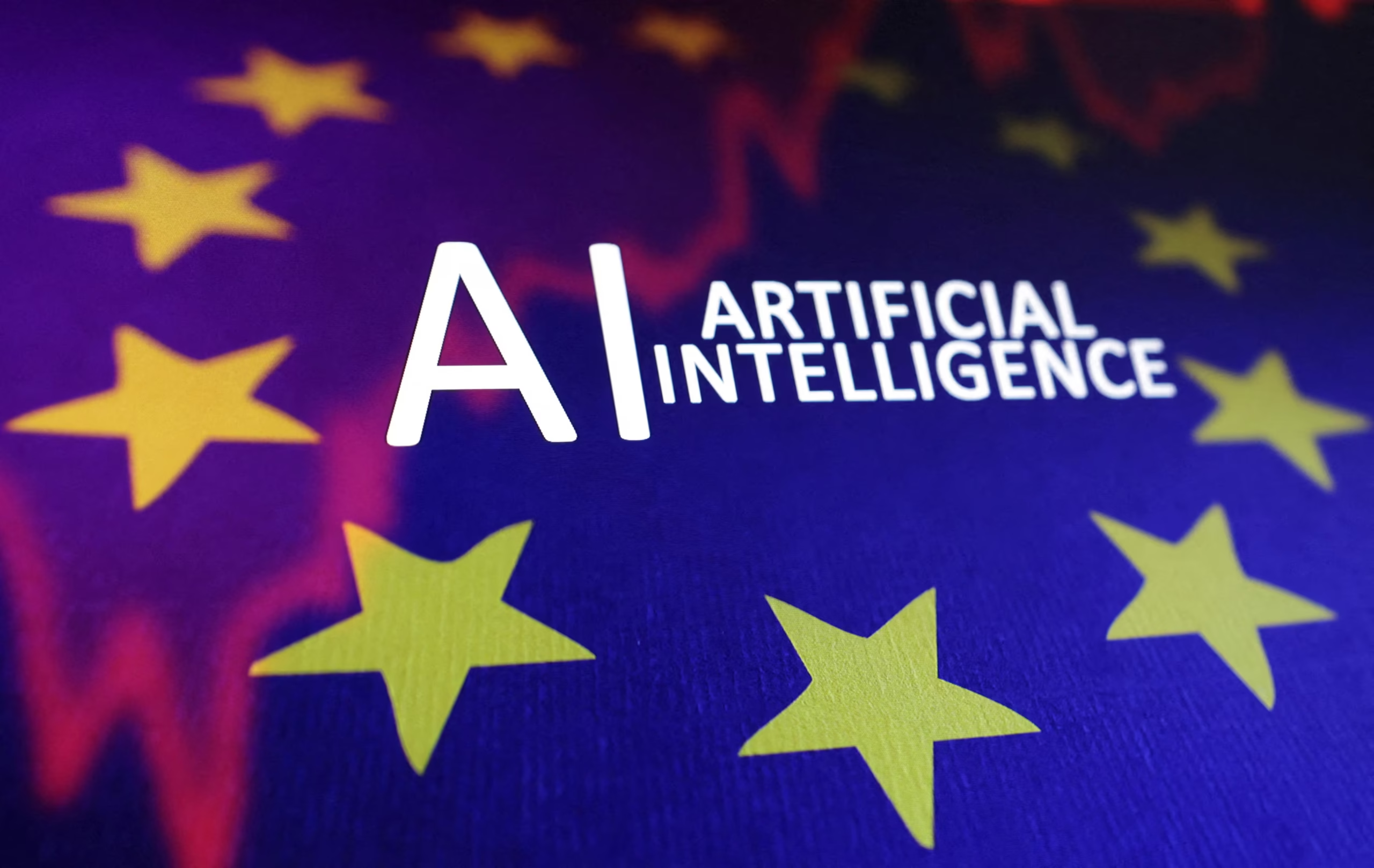
European investors are closely watching companies that have heavily invested in artificial intelligence (AI), expecting them to start demonstrating financial returns soon. While AI continues to reshape industries, the pressure is mounting for these companies to justify the high valuations that have accompanied their ambitious adoption strategies.
Shifting Investor Focus
In recent months, AI-related stocks have faced turbulence due to growing concerns over a potential economic downturn. This instability was amplified in January with the introduction of the cost-effective DeepSeek AI model from China, which triggered a selloff in the tech sector. Despite this, investor sentiment remains strong for AI, though preferences are shifting from AI hardware suppliers to companies that are effectively incorporating AI into their business operations.
Notably, investors are gravitating towards firms that leverage AI for increased efficiency rather than those that manufacture chips and other AI-enabling components. Companies like the information services giant RELX and software provider SAP are now seen as more promising than chipmakers, which face challenges from evolving AI technology that reduces dependency on high-cost hardware.
Pressure to Show Results
While AI adoption is still in its early stages, investors are no longer satisfied with mere promises of innovation. They want to see tangible financial benefits, and patience is wearing thin. Companies that fail to deliver measurable returns on their AI investments by next year risk losing investor confidence.
The demand for performance is particularly evident in the European market, where AI-exposed stocks are more limited compared to the U.S. Companies like London Stock Exchange Group (LSEG) and RELX have seen only moderate declines in stock value, while AI hardware providers such as ASM International and BE Semiconductor have faced steeper losses. German software giant SAP, which recently surpassed Novo Nordisk to become Europe’s most valuable company, has demonstrated resilience by effectively integrating AI into its offerings.
Market Valuations and Investor Patience
Despite investor enthusiasm for AI, market valuations remain a concern. AI-focused stocks trade at significantly higher price-to-earnings ratios than the broader market. For example, the STOXX 600 index has an average price-to-earnings ratio of 17, whereas AI adopters such as SAP and LSEG are valued at over 90 times earnings. These high valuations mean that companies must soon justify their worth through increased revenues and profitability.
A survey conducted in January among over 100 Fidelity analysts revealed that nearly three-quarters of them expected AI to have minimal impact on company profitability in 2025. However, the longer-term outlook is more optimistic. Portfolio managers at leading investment firms insist that while 2025 may still be a year of beta testing and gradual implementation, by 2026, AI adopters must demonstrate clear financial gains.
Steve Wreford, a senior portfolio manager at Lazard Asset Management, warns that unchecked AI investments without visible returns could lead to investor fatigue. While management teams may temporarily reassure shareholders by promising better results in the next quarter, failure to deliver by the end of 2025 could lead to scepticism and declining valuations.

The Need for Strong Use Cases
For AI investments to be sustainable, companies must develop compelling use cases that justify continued spending. The real test for AI will be its ability to create applications that businesses and consumers find valuable enough to pay for.
Paddy Flood, a portfolio manager at Schroders, believes that while AI’s potential is enormous, only those companies that implement practical and monetizable AI applications will thrive. The absence of a breakthrough or “killer” AI use case could hinder growth and shake investor confidence.
Similarly, Fabio di Giansante, head of large European equities at Amundi, emphasizes that European AI investments are already priced at a premium due to their limited availability. However, most of the industry’s focus so far has been on infrastructure and capital expenditure. To maintain investor interest, companies must begin showcasing AI’s impact on revenue and profit margins.
The Year of Reckoning
As AI integration accelerates across industries, 2025 could be a pivotal year. If AI adopters fail to deliver substantial financial benefits, investor sentiment may turn negative, leading to reassessments of company valuations.
In this high-stakes environment, companies that can successfully leverage AI to drive efficiency, reduce costs, and generate new revenue streams will be the ultimate winners. The next year will determine whether AI remains a game-changer or if the hype begins to fade.
Tech
X CEO Elon Musk sues Indian Government Over Alleged Misuse of IT Act for Content Blocking
Published
2 weeks agoon
March 20, 2025
Elon Musk’s X, formerly known as Twitter, has filed a lawsuit against the Indian government, challenging what it describes as the arbitrary use of the Information Technology (IT) Act to censor online content. The case, filed in the Karnataka High Court, raises critical concerns about free speech, regulatory overreach, and the legal framework governing online content moderation in India.
X’s Allegations Against the Indian Government
The core of X’s legal challenge is the Indian government’s use of Section 79(3)(b) of the IT Act to force platforms to block content. According to X, this section does not explicitly grant blocking powers to the government and is being misused to bypass the structured legal process established under Section 69A of the same Act.
X argues that Section 69A already provides a well-defined process for content blocking, requiring government authorities to justify such actions based on national security, public order, or sovereignty concerns. The section mandates procedural safeguards, including a review mechanism, as reinforced by the Supreme Court’s landmark 2015 Shreya Singhal judgement. The company contends that by sidestepping these safeguards and using Section 79(3)(b), authorities are effectively creating a parallel censorship mechanism without proper judicial oversight.
Implications of Section 79(3)(b)
Under Section 79(3)(b), social media platforms risk losing their legal protection, known as safe harbour, if they fail to remove content when directed by the government. However, X claims that this provision forces platforms into a legal grey area, where they must determine the legality of content without clear governmental directives. This creates a chilling effect on free speech, as platforms may opt for over-censorship to avoid legal repercussions.
Furthermore, the lawsuit highlights that vague definitions within the section increase the liability of social media companies. X maintains that this shifts undue responsibility onto platforms, exposing them to legal risks while also enabling the government to exert undue influence over online discourse.
X’s Concerns Over the Sahyog Portal
Another key issue in X’s lawsuit is the Indian government’s push for social media platforms to join Sahyog, a portal run by the Indian Cyber Crime Coordination Centre (I4C) under the Ministry of Home Affairs. This platform is designed to streamline takedown orders under Section 79(3)(b) and facilitate direct coordination between law enforcement and social media companies.
X has strongly opposed Sahyog, calling it a “Censorship Portal” with no clear legal mandate. The company asserts that forcing platforms to participate in Sahyog violates the IT Guidelines of 2021, which already require them to appoint compliance officers and grievance redressal mechanisms. By demanding special officers for Sahyog, X claims that the government is expanding its content control powers without legal basis.

Legal Precedents and Constitutional Challenges
X’s lawsuit draws heavily from the Shreya Singhal case (2015), where the Supreme Court ruled that online content can only be blocked through a proper judicial process or the legally defined route under Section 69A. X argues that the government’s current approach contradicts this precedent and undermines constitutional protections for free speech.
By filing this legal challenge, X is signalling broader concerns about government overreach and the potential impact on digital freedoms in India. The case could set an important precedent for how social media platforms operate within India’s regulatory framework and how far government authorities can go in content moderation.
Impact on X’s Business and User Trust
X warns that the Indian government’s actions pose a significant threat to its business model. The platform’s value is rooted in its ability to facilitate free and lawful expression, and arbitrary blocking orders could erode user trust. If users feel that content is being unjustly censored, engagement levels may decline, affecting both advertising revenue and the overall platform ecosystem.
Additionally, X’s refusal to comply with Sahyog raises the possibility of retaliatory actions from the Indian government. While Justice M. Nagaprasanna has advised X to return to court if punitive measures are taken, the risk of legal or regulatory backlash remains a pressing concern for the company.
Broader Implications for Digital Freedom in India
This case extends beyond X and could have wider implications for all social media platforms operating in India. If X’s challenge succeeds, it could reinforce the importance of judicial oversight in content regulation and prevent the government from imposing excessive restrictions on online speech.
On the other hand, if the government’s stance is upheld, platforms may face greater uncertainty and compliance burdens, leading to a more censored digital landscape. The outcome of this lawsuit will likely shape India’s internet governance policies and influence how global tech companies engage with Indian regulations in the future.
Elon Musk’s X has taken a bold step by suing the Indian government over its alleged misuse of the IT Act for content blocking. The case raises fundamental questions about regulatory transparency, free expression, and platform liability. With the Karnataka High Court set to deliberate on this critical issue, the outcome will have far-reaching consequences for digital rights and government accountability in India.
As the legal battle unfolds, stakeholders across the tech industry, civil society, and legal experts will be closely watching how India balances regulatory authority with fundamental freedoms in the digital age. The case could serve as a litmus test for India’s commitment to upholding constitutional protections for free speech in the rapidly evolving online ecosystem.

The vast expanse of space, a canvas of infinite black sprinkled with the brilliance of distant stars, held a human secret for nine long months. A figure, a pioneer, a symbol of human resilience, had been suspended within this celestial ballet, conducting groundbreaking research and pushing the boundaries of human endurance. Now, after an extended sojourn, she was returning home.
This wasn’t just a flight back to Earth; it was a homecoming after an extraordinary period of isolation and scientific pursuit. The return journey, a carefully orchestrated dance of technology and human skill, marked the end of a mission that had captivated audiences worldwide. For those following her journey, it was a moment of profound awe and anticipation, a collective holding of breath as the tiny capsule pierced the atmosphere, a fiery testament to human ambition.
The astronaut, a veteran of space exploration, had spent nearly a year aboard the International Space Station, a testament to international collaboration and scientific progress. Her mission, a complex tapestry of experiments and observations, ranged from studying the long-term effects of microgravity on the human body to conducting critical research in materials science and astrophysics. The data collected during her stay would undoubtedly contribute to a deeper understanding of our universe and pave the way for future human exploration.
Living and working in space for such an extended period presents a unique set of challenges. The human body, accustomed to the constant pull of Earth’s gravity, undergoes significant changes in the microgravity environment. Muscle atrophy, bone density loss, and cardiovascular adaptations are just a few of the physiological hurdles that astronauts must overcome. The astronaut’s mission provided invaluable insights into these adaptations, allowing scientists to develop countermeasures and strategies for mitigating the adverse effects of long-duration spaceflight.
Beyond the scientific contributions, the mission also served as a powerful reminder of the human spirit’s indomitable nature. The astronaut’s daily life aboard the space station, a routine of experiments, maintenance, and communication with ground control, was a testament to her dedication and resilience. Her ability to adapt to the confined environment, maintain a positive outlook, and perform complex tasks under immense pressure was a source of inspiration for people around the globe.

a-stellar-return-nine-months-among-the-stars
The return to Earth was a delicate process, a combination of precise calculations and intricate maneuvers. The reentry, a fiery descent through the atmosphere, was a spectacle of engineering prowess. The capsule, protected by a heat shield, endured extreme temperatures as it slowed down and prepared for landing. The parachutes deployed, gently guiding the capsule to a safe touchdown on the vast steppes, a stark contrast to the weightlessness of space.
Upon landing, the astronaut was greeted by a team of medical personnel and support staff. After nine months in space, her body would need time to readjust to Earth’s gravity. The process of rehabilitation and reintegration would be gradual, as her muscles and bones regained their strength.
The mission’s success was a testament to the collaborative efforts of scientists, engineers, and support staff from around the world. It highlighted the importance of international cooperation in advancing human knowledge and exploration. The data collected during the astronaut’s stay will be analyzed for years to come, providing valuable insights into the mysteries of space and the human body.
The return of the astronaut was not just a scientific achievement; it was a human story, a narrative of courage, perseverance, and the relentless pursuit of knowledge. It reminded us of our innate desire to explore the unknown, to push the boundaries of what is possible. It was a moment that inspired us to look beyond our own horizons, to dream of a future where humanity reaches for the stars.
The impact of this mission extends far beyond the scientific community. It serves as a powerful reminder of the potential for human achievement, a testament to the power of collaboration, and a source of inspiration for future generations of explorers. The astronaut’s journey, a nine-month odyssey through the vastness of space, will forever be etched in the annals of human history, a shining example of our unwavering quest to understand the universe and our place within it.
Tech
The Digital Tightrope: Balancing AI’s Promise with Security’s Imperative in a Hyper connected World
Published
2 weeks agoon
March 18, 2025
We’re living in an era of unprecedented technological integration, where artificial intelligence (AI) is no longer a futuristic concept, but a pervasive force weaving itself into the very fabric of our daily lives. From the seamless, personalised recommendations that curate our online shopping experiences, anticipating our needs with uncanny accuracy, to the increasingly sophisticated virtual assistants that manage our household tasks, schedule appointments, and control smart home devices, AI is undeniably enhancing convenience and efficiency. This integration is not merely a novelty; it represents a fundamental shift in how we interact with technology, promising to streamline processes, automate mundane tasks, and personalise experiences to an extent previously unimaginable.
Consider the burgeoning field of AI-driven healthcare, where algorithms are being used to analyse medical images, detect diseases earlier, and even personalise treatment plans. Or the rise of autonomous vehicles, promising safer and more efficient transportation. In the realm of business, AI is revolutionising customer service with chatbots and intelligent automation, while predictive analytics optimise supply chains and financial forecasting. These examples underscore the profound impact AI is having across diverse sectors, driving innovation and transforming industries.
However, this surge in AI-driven convenience is not without its challenges. As we become increasingly reliant on digital platforms for communication, commerce, education, and even basic daily tasks, the spectre of cybersecurity threats looms larger than ever. The proliferation of connected devices, the rise of sophisticated phishing attacks, and the increasing sophistication of ransomware have created a complex and volatile threat landscape. This heightened reliance has triggered a critical focus on cybersecurity awareness, compelling individuals and businesses alike to adopt more robust security measures.

Protecting personal and sensitive information has become paramount, driving the development and implementation of advanced encryption techniques, multi-factor authentication protocols, and sophisticated threat detection systems powered by AI itself. Organisations are investing heavily in cybersecurity infrastructure, employing skilled professionals, and implementing comprehensive security policies to mitigate risks. The concept of “zero trust” security, where every user and device is treated as potentially compromised, is gaining traction as a proactive approach to safeguarding data.
Furthermore, the rise of AI itself presents new security challenges. Deepfakes, AI-generated misinformation, and the potential for AI-powered cyberattacks are emerging threats that require innovative solutions. The ethical implications of AI, including issues of bias, privacy, and accountability, are also being debated and addressed.
The digital landscape, once a frontier of boundless opportunity, now demands a delicate balancing act: harnessing the transformative power of AI while simultaneously safeguarding against the ever-evolving threats that accompany our interconnected world. This digital tightrope walk requires a proactive and multi-faceted approach, where technological innovation and security awareness go hand in hand, ensuring that the promise of AI can be realised without compromising the safety, privacy, and integrity of our digital lives. It necessitates a collaborative effort between governments, businesses, and individuals to develop and implement robust security frameworks, promote digital literacy, and foster a culture of cybersecurity awareness. As AI continues to evolve and integrate into our lives, the need for vigilance and adaptation will only intensify, making the balance between innovation and security a defining challenge of our time.

The integration of artificial intelligence (AI) into city operations is not a new concept. Across the globe, urban centres are leveraging AI to enhance everything from public services to infrastructure. As this technology continues to expand, cities now have the opportunity to reflect on the most effective applications of AI and learn from one another to maximise its potential.
A recently published report, AI-Powered Cities of the Future, examines how 250 cities across 78 countries are adopting AI-driven solutions. The findings reveal that the more extensively a city employs AI, the better equipped it is to address pressing urban challenges such as sustainability, infrastructure management, public health, and security.
AI’s Impact on Urban Development
According to the report, over half of the cities surveyed are actively using AI, while another 35% are in the process of piloting or planning AI implementation. The top ten most effective AI applications, as ranked by cities, include:
- Traffic management
- Public safety
- Energy management
- Customer service
- Predictive maintenance
- Waste management
- Decision-making and analysis
- Urban planning
- Cybersecurity
- Fraud detection
These applications demonstrate AI’s ability to streamline city operations and improve efficiency. However, the question remains: Is AI making a meaningful impact on the most challenging urban issues?
The cities leading in AI implementation provide valuable insights. These urban centres utilise both traditional AI and generative AI (GenAI), incorporate AI across various domains, prioritise responsible AI usage, and establish strong foundations for future AI-driven advancements.
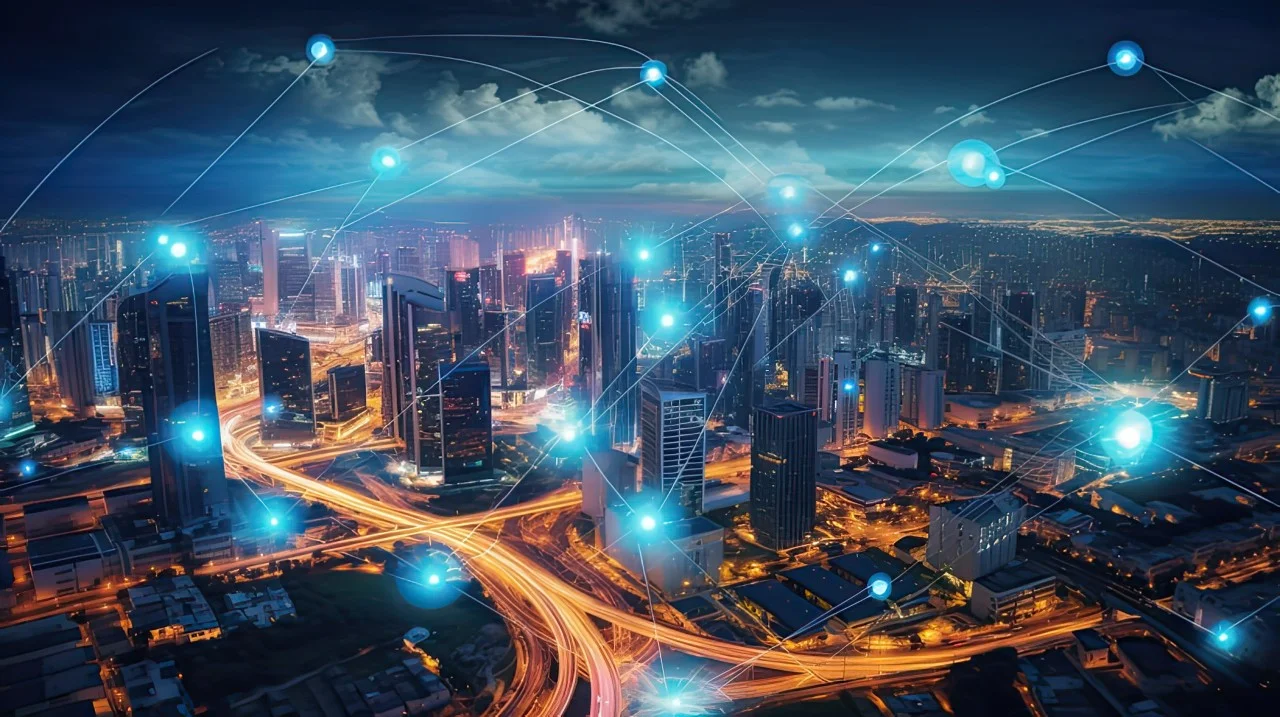
AI Leaders and Their Advantages
Among the 250 cities studied, 20% were identified as “AI leaders.” These cities have demonstrated greater preparedness for urban challenges, with 78% stating they are well-equipped to tackle issues such as climate change, public health crises, and infrastructure demands. In contrast, only 63% of less AI-mature cities express the same level of confidence.
Moreover, AI-leading cities feel nearly three times more prepared to handle challenges such as geopolitical instability, supply chain disruptions, and socioeconomic shifts. They also exhibit greater resilience in critical areas such as public safety, infrastructure management, and technology integration.
Lessons from the AI Pioneers
Cities looking to enhance their AI maturity can adopt best practices from these AI leaders. The report highlights several key strategies contributing to their success:
1. Commitment from Leadership
A well-defined vision and strategic plan for AI development, supported by appropriate funding, is crucial. Many AI leaders initiate their AI strategies at the national level and implement them systematically within cities.
2. Modern Data and IT Infrastructure
A cloud-based IT ecosystem is fundamental to AI success. Leading cities consolidate data management systems to create a unified, real-time source of information accessible to key stakeholders.
3. Developing AI Talent
Cities that prioritise AI workforce development by training officials, employees, and residents create a strong foundation for future AI advancements. Collaborations with universities and AI bootcamps further ensure a steady pipeline of skilled professionals.
4. Fostering an AI Innovation Ecosystem
Successful AI cities actively engage with technology experts from academia, research institutions, and private enterprises. Hosting collaborative meetings with AI vendors helps cities implement cost-effective and cohesive AI strategies.
5. Transforming Urban Services with AI
From predictive maintenance for public infrastructure to AI-driven self-service citizen portals, AI leaders embrace innovative applications. They also explore advanced AI technologies such as agentic AI, which enables systems to make independent decisions, and synthetic AI-generated data to address privacy concerns.
6. Combining AI with Other Technologies
Leading cities integrate AI with complementary technologies like cloud computing, blockchain for secure transactions, the Internet of Things (IoT) for real-time data collection, and digital twins for urban planning and optimisation.
7. Prioritizing Data Security and Privacy
As AI requires extensive data utilisation, AI leaders implement robust cybersecurity frameworks to mitigate risks. They also use AI-driven threat detection systems to counter cyberattacks in real time.
Harnessing AI for the Future
AI-powered cities are redefining urban living by not only improving existing processes but also unlocking new possibilities. With generative AI, the capacity for data-driven analysis and problem-solving is set to expand further. Currently, 87% of cities are either planning, piloting, or already deploying GenAI in their operations.
The emergence of agentic AI presents another significant leap forward. These AI systems can autonomously analyse data and make informed decisions without human intervention, further streamlining urban management.
However, to fully harness AI’s potential, cities must align technology deployment with their overarching missions. Human oversight will continue to play a crucial role in ensuring AI’s responsible use, maintaining ethical standards, and fostering public trust. Balancing automation with human involvement is essential in driving meaningful and sustainable AI advancements.
As cities around the world embrace AI, those leading the charge demonstrate the vast potential of this technology in addressing modern urban challenges. By committing to strategic AI adoption, building robust IT infrastructures, fostering AI talent, and prioritising security, cities can strengthen their resilience and readiness for the future.
While AI implementation presents challenges, the rewards—enhanced urban efficiency, stronger public services, and greater adaptability to evolving risks—make the investment worthwhile. By learning from AI leaders, cities can unlock the full benefits of AI and create smarter, more connected, and sustainable urban environments for generations to come.
Write something…
Trending
-

 Health4 years ago
Health4 years agoEva Savagiou Finally Breaks Her Silence About Online Bullying On TikTok
-

 Health3 years ago
Health3 years agoTraumatone Returns With A New EP – Hereafter
-

 Health3 years ago
Health3 years agoTop 5 Influencers Accounts To Watch In 2022
-

 Fashion4 years ago
Fashion4 years agoNatalie Schramboeck – Influencing People Through A Cultural Touch
-

 Fashion4 years ago
Fashion4 years agoThe Tattoo Heretic: Kirby van Beek’s Idea Of Shadow And Bone
-

 Fashion8 years ago
Fashion8 years ago9 Celebrities who have spoken out about being photoshopped
-

 Health4 years ago
Health4 years agoTop 12 Rising Artists To Watch In 2021
-

 Health4 years ago
Health4 years agoBrooke Casey Inspiring People Through Her Message With Music
-

 Tech2 years ago
Tech2 years agoGoogle Developer Conference to Unveil Latest AI Updates, Including PaLM 2 Language Model
-

 Health3 years ago
Health3 years agoTop 10 Influencers To Follow This 2021
